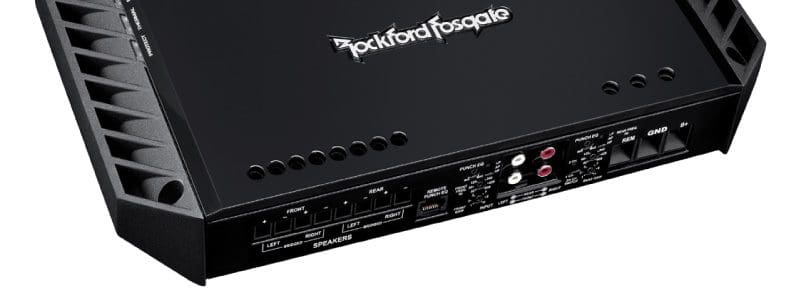An Amplifier Tutorial Part 3: Breaking Down Amplifier Terms

You don’t need to know how an amplifier works to enjoy the benefits of one in your car or boat.
Since we’ve gone over power, gain, crossover and subsonic filter in part one and two of our amplifier tutorial, we want to make sure your amplifier vocabulary is up-to-par so you can become experts, just like us! Other amplifier terminology includes:
- Stereo. Two channels: left and right.
- Bridged. Combines left and right channels into one mono channel. In most cases, this also increases the power output of the amp.
- Mono. One channel. Most subwoofer amps are offered in a mono configuration.
- Multi-channel. Four, five, six, or even eight channels worth of amplification from a single amplifier.
- Clipping. When the input level exceeds the circuit’s capacity. This distorts the highest and lowest peaks in the musical signal. Clipped input signals destroy speakers, in which we hope you got that warranty! Extra power for when the music demands it. The more power you have, the less likely you will use it all but it will be there when it is needed. Class refers to the amplifier’s circuitry and the way it handles amplification. Class A and AB amps are less efficient than a class D amplifier but they sound better. A Class D amplifier is more efficient and can produce incredible amounts of power but does so at the expense of sound quality. A newer Class BD amp has the power and efficiency of class D with the sound quality of a Class B amp.
- Efficiency. Typical Class AB amplifiers waste around 50% of the power required to produce their rated output. A Class D amplifier has a 75-80% efficiency rating and typically runs a little cooler than a class AB amp.
- Decibel (dB). The standard unit of measure for volume or SPL (sound pressure level).A 3 dB gain requires the doubling of amp power.
- Damping factor. The ability of the amplifier to control the vibration of the speaker cone during signal changes. If the music stops, the speaker should stop too. More damping means greater musical accuracy.
- Ohm. Unit of measurement for impedance or resistance. An eight-ohm speaker requires twice as much power to produce the same volume as a four-ohm speaker. A standard car audio speaker is four ohms. The vast majority of amplifiers are designed to operate with four-ohm speakers. Subwoofer amplifiers typically can handle two and even one-ohm loads.
- RCA Input. A low-level signal input and the industry standard for sending audio signals between units.
- High-level input. An input signal with enough power to drive a speaker. An amplifier with a high-level input has circuitry built-in to handle the extra input power.
Need help putting your system together?
Check out our Guide to the Ultimate Car Audio System. Contact Cartronics for car audio, car stereo installation and car amplifier installation in Nashville, TN, Brentwood, Antioch and Madison, TN.

